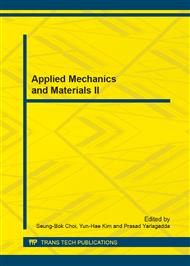p.109
p.114
p.119
p.123
p.128
p.132
p.137
p.141
p.146
Development of an Novel Adaptive Suspension System Based on Ball-Screw Mechanism
Abstract:
For the passive and semi-active suspensions are characterized as with constant parameters which cannot cope with time-variant road conditions, the suspension results are difficult to be satisfied. Although, the active ones are better than previous two on suspension performance, until now which are still far from real application for the drawbacks of complicated structure, large volume, costly, and difficult maintenance. Here, Ball Screw (BS) is with the characteristics of smaller volume, precise positioning, and well handling high-speed forward and backward transmissions. Instead of hydraulic or pneumatic mechanisms used for vehicle suspension, BS is adopted to be the main body of the proposed New Adaptive Suspension System (NASS). Besides, in order to overcome the unavoidable time-delay resulted from mechanical or computational operations, the Kalman filter, integrated with suspension controller, is used to estimate the road conditions. The effectiveness and feasibility of this proposal are confirmed through simulation studies.
Info:
Periodical:
Pages:
128-131
Citation:
Online since:
December 2013
Authors:
Keywords:
Price:
Сopyright:
© 2014 Trans Tech Publications Ltd. All Rights Reserved
Share:
Citation:


